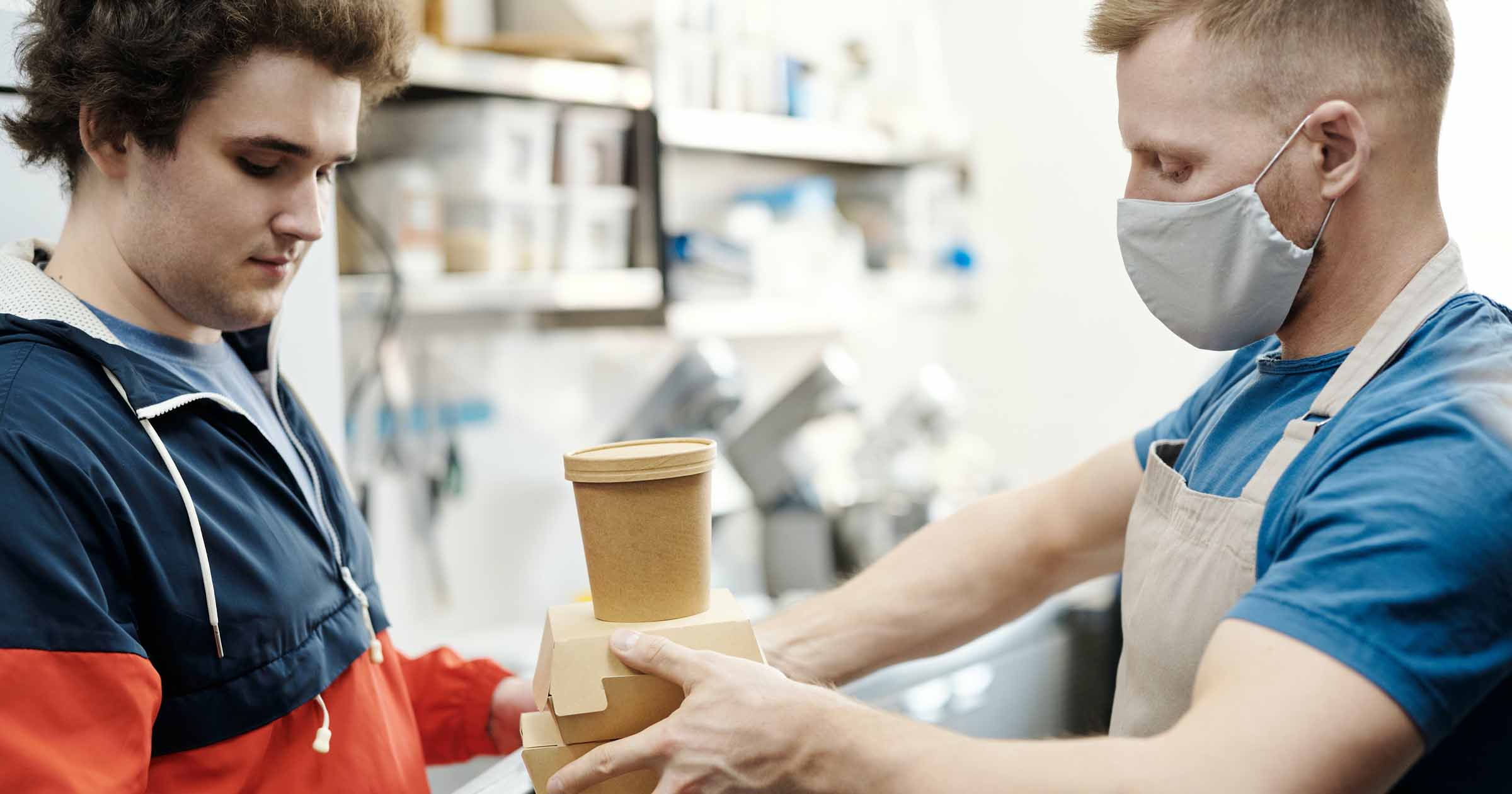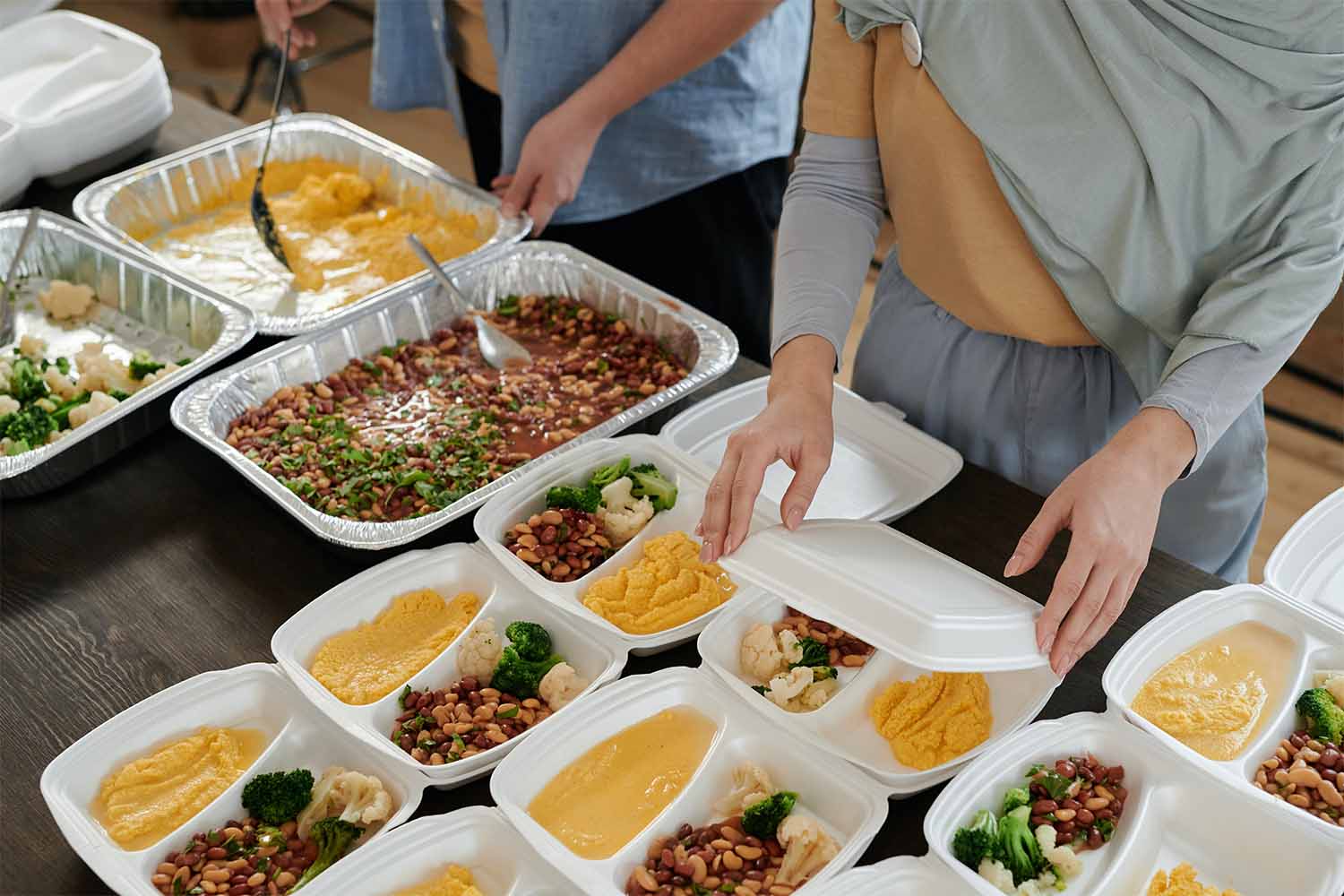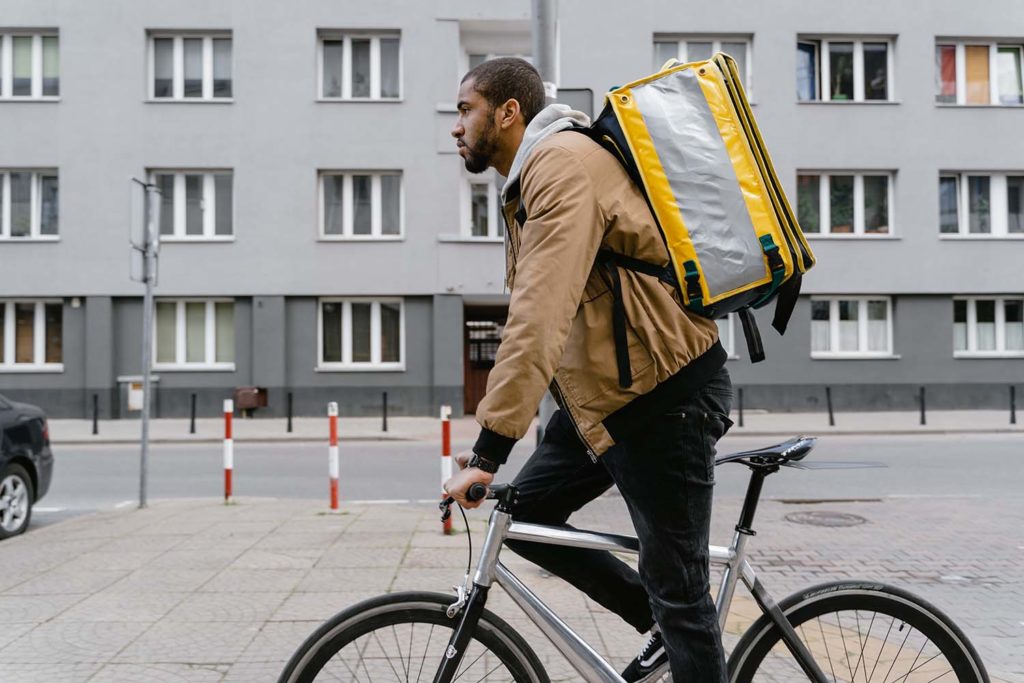How to Deliver Hot Food
7 min read

It’s a Friday night, and your customer has been looking forward to ordering from your restaurant all day. They’re planning a night in on the couch, so they quickly punch in an online order for delivery. They wait around for 45 minutes, meet the delivery driver out front, and eagerly sit down to eat, expecting a plate of piping hot food…only to take their first bite of a disappointing, lukewarm meal. You probably didn’t follow best practices on how to deliver hot food.
To a customer, there’s almost nothing worse than paying for a delicious meal for takeaway or delivery, only for it to arrive cold. In a food delivery survey report from First Orion, 36% of respondents listed “cold food” as one of the most common issues requiring customer service contact.
Delivering hot food hot is not just a customer satisfaction concern; it’s also a food safety issue. The FDA states that hot food should be kept at 140° F to prevent bacteria growth. If your restaurant is delivering food that falls out of the safe temperature zone, it poses a safety risk to customers.
There are several strategies businesses can use when delivering hot food items to customers. The first and most obvious is better food insulation, but there’s also vehicle-specific feature planning, area-specific route planning, and delivery prioritization—all of which OptimoRoute can account for.
Skip to the section that interests you most:
- How to Keep Food Hot During Delivery: 6 Tips
- The Chief Culprit When Hot Food Is Delivered Cold: Travel Time
- Don’t Just Minimize Travel Time: Implement Smart Tech Solutions to Guarantee Success
How to Keep Food Hot During Delivery: 6 Tips
You can’t expect food to stay hot just by piling cardboard boxes or Styrofoam containers in a paper bag and stapling it closed. Whether you’ve been in the food delivery industry for years or you’re looking to start a food delivery business, you can learn from these best practices to keep food hot while it’s en route.
Make sure hot food is packed separately
When hot foods are packaged together with cold foods, heat from the warmer container will transfer to the colder one. This not only warms the cold items (who wants to eat a hot garden salad?) but means your hot food will cool off as well.
The CDC recommends packaging hot and cold food separately during delivery to maintain temperatures. Refrigerated, frozen, or room temperature food should always be kept in a separate bag from the hot food containers.
Keep windows down in the vehicle and A/C off
Air conditioning lowers the temperature inside the entire car, which affects the temperature of everything inside it—including your hot food. Instead of running the A/C, drivers should lower the windows. This way, they can cool off without significantly lowering the hot food’s temperature.
Use insulated bags or packages
A thermal or insulated food delivery bag keeps heat from transferring out. Insulated pizza bags are commonly used for pizza delivery, but they’re useful for other types of food, too. Compared to plastic or paper bags, it’s a great option for keeping food hot during delivery.
Make sure every driver has enough insulated bags or packages for all of their hot containers. As with any other expense, always keep food packaging costs in mind to take care of your bottom line. If you’re in an urban area and relying on delivery bikers, you’ll also need to account for exposure to the elements. Use insulated bags with water-resistant material to keep food hot and protected in all weather conditions.
Add heat packs to your bags
Any food dish is going to slightly decrease in temperature over time if there’s nothing keeping it hot any longer. Use heat packs to help keep food warm during delivery. Add them directly in the bag with the food containers to keep the food as warm as possible and the heat packs well-insulated.
Use a portable food warmer
Portable food warmers are a great way to keep meals heated during food delivery, offering an upgrade over insulated bags or heat packs. Food warmers are easy to use and provide the most temperature control and heat insulation of any packaging system.
They’re typically electric and need a power source, so make sure there are working 12V adapters in your delivery vehicles. You should also make sure the kind you’re buying can fit multiple containers to get the most out of it.
Pack in aluminum foil if necessary
A heat pack, insulated bag, or portable food warmer may not be enough on its own to keep food warm until it’s dropped off at your customer’s door. Aluminum foil can provide an extra degree of protection and insulation when delivering hot food.
Aluminum has high reflectivity for both visible and infrared light, meaning that instead of radiating heat out from a food container, it reflects the heat back toward the container. Wrap containers in aluminum foil to provide extra insulation to deliver food hot and keep customers satisfied.
The Chief Culprit When Hot Food Is Delivered Cold: Travel Time

Heat packs, food delivery bags, and food warmers can help keep food warm, but there’s only so long that food temperatures can be maintained in a car or on the back of a bicycle. The real cause of food being delivered cold is too much time spent on the road during delivery. So, to keep food hot, the best thing you can do is optimize routes to get to the customer’s house faster.
According to a McKinsey study from 2016, “speed of delivery is the biggest variable in customer satisfaction, with an average 60 percent of consumers across markets citing it as a key factor.” And that was pre-pandemic, after which demand for food delivery services and platforms skyrocketed. Now, 68% of 1,000 consumers surveyed by the National Restaurant Association say they’re more likely to purchase takeout or delivery than they were before the pandemic.
In the face of rising demand, it’s more important than ever for restaurants and foodservice businesses to match customer expectations and increase their delivery speed. To do this, you need to cut down on travel time; you need to optimize the routes your delivery drivers are taking. You can try manual calculations or route mapping, but they’re not always the most accurate and will soak up a lot of your time.
To truly improve on delivery speed and bring high-quality meals to your customers, you need a tool that automatically calculates the fastest, most efficient routes for your drivers to take.
Don’t Just Minimize Travel Time: Implement Smart Tech Solutions to Guarantee Success

OptimoRoute can guarantee food arrives hot and ready for your customers. Our route planning software for food delivery helps you optimize routes, reduce delivery time, and simplify your delivery process—all without any manual, time-consuming calculations.
Our solution leverages smart tech features like vehicle-specific feature planning, area-specific route planning, and delivery prioritization to guarantee that orders arrive as quickly as possible and at just the right temperature to enjoy safely.
Vehicle-specific feature planning: Plan your deliveries with the most appropriate vehicle and delegate hot food deliveries to vehicles that have a built-in heating system. The software allows you to assign vehicle features upfront and specify which have heating (or, alternatively, frozen food storage capabilities). You can then automatically assign heated vehicles to hot food orders to help keep the food warm while on the road.
Area-specific route planning: OptimoRoute’s software helps keep deliveries within specific geographic areas with geofencing. One of the biggest wastes of time for delivery drivers is dropping off orders on opposite sides of town on the same trip; it’s time-consuming and inefficient to drive out of the way and back again, and hot food will get cold in the meantime. To better optimize delivery routes and times, use software like OptimoRoute to assign designated delivery zones and group orders together based on those zones.
This type of route planning is becoming even more important as the food delivery industry grows and evolves. According to recent OptimoRoute delivery data, there’s been a decrease in orders for individual drivers (34%) but an increase in miles traveled (43%), suggesting businesses are now covering larger metropolitan areas. With geofencing, you can make sure every driver stays within their zone to deliver orders, efficiently managing delivery routes over larger coverage areas. Your customers will receive their food faster, and the food will stay warmer, safer, and ready to eat.
Delivery prioritization: OptimoRoute’s delivery prioritization feature allows you to set time-based priorities so that you can increase the delivery speed for high-priority orders. Hot meals should qualify as a higher priority since you don’t want to risk the food getting cold on the road. Set time-based priorities for hot food so that your drivers deliver those food orders first and the customer receives the meals while they’re still warm. Lower-priority orders get delivered later because they can stay in the vehicle longer.
With these smart features, OptimoRoute guarantees that food arrives hot and ready to eat just as if your customers were sitting down in your dining room. Our solution is scalable for businesses of all sizes, from local meal delivery businesses and grocery stores to larger food delivery businesses that need to optimize last-mile delivery. Take ownership over in-house delivery by planning and optimizing food delivery routes that reduce travel time and keep food well-heated.
Are you looking to start offering food delivery but not quite sure how to go about doing so? Learn more about why delivery is a necessity and how to select the best delivery service for your restaurant.
Try OptimoRoute™ for Free
No installation or credit card required


